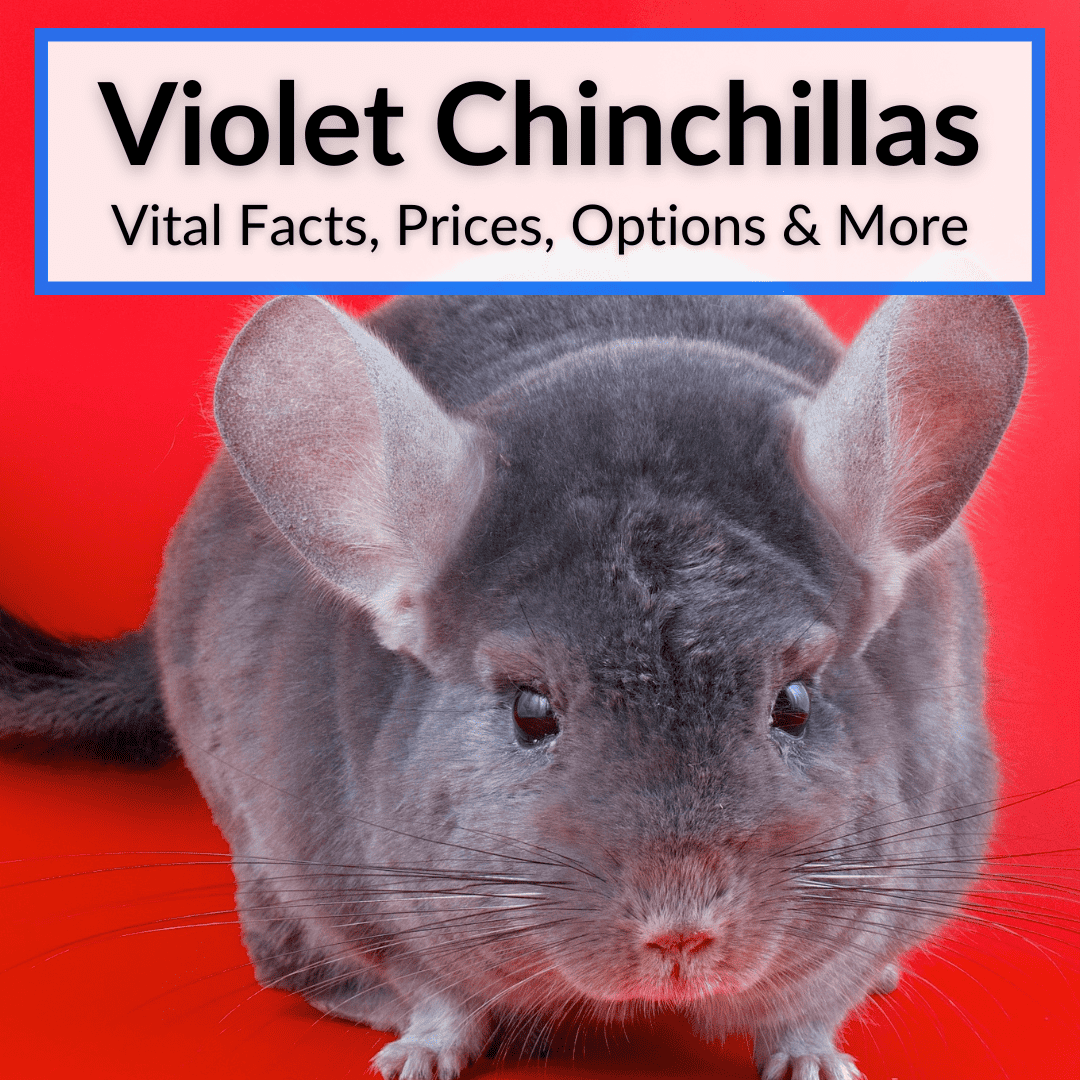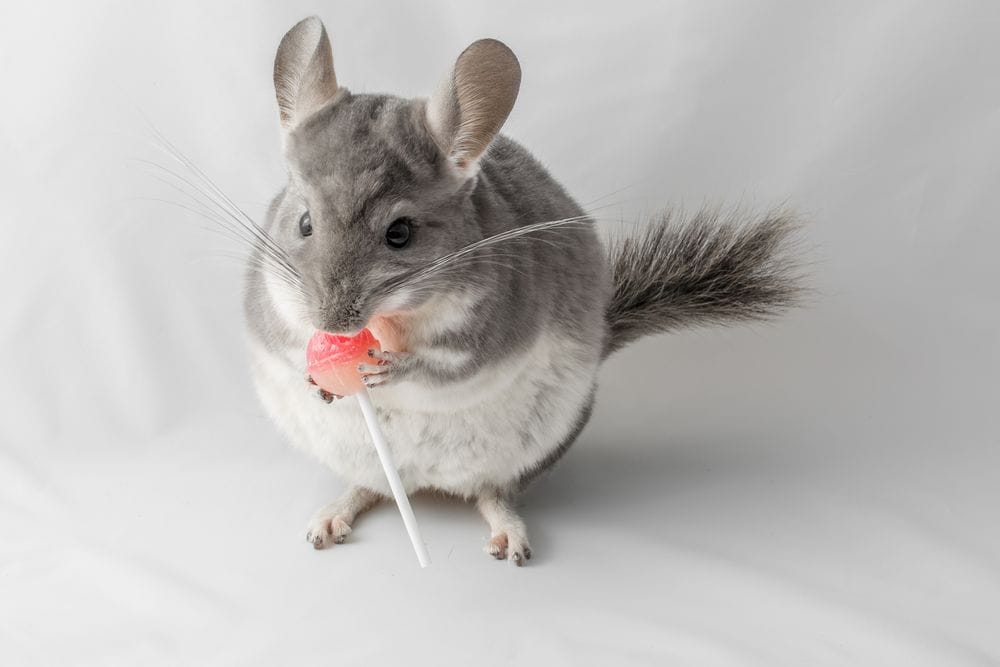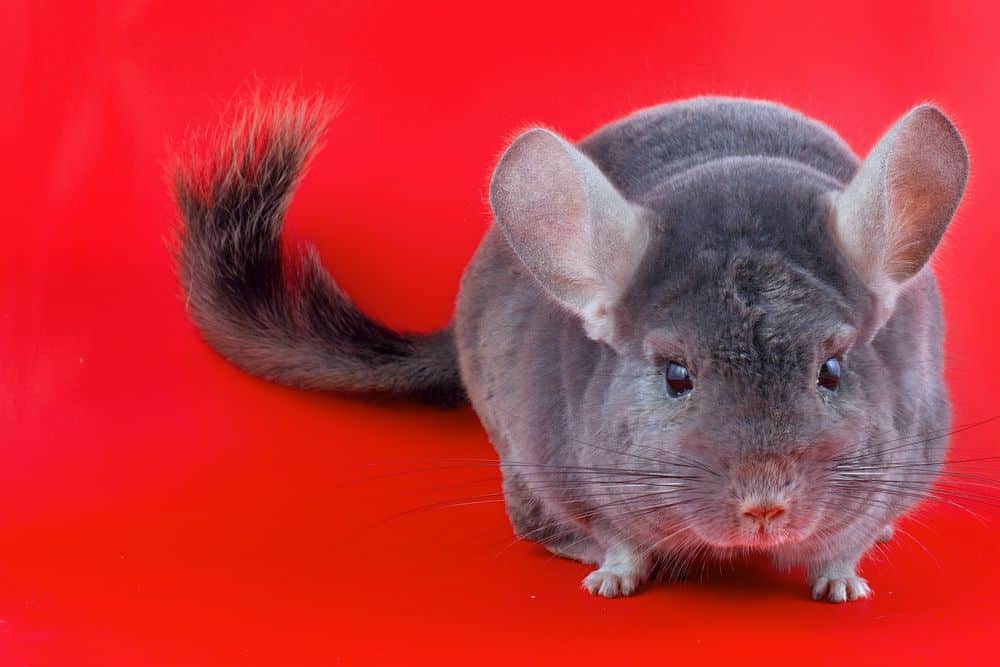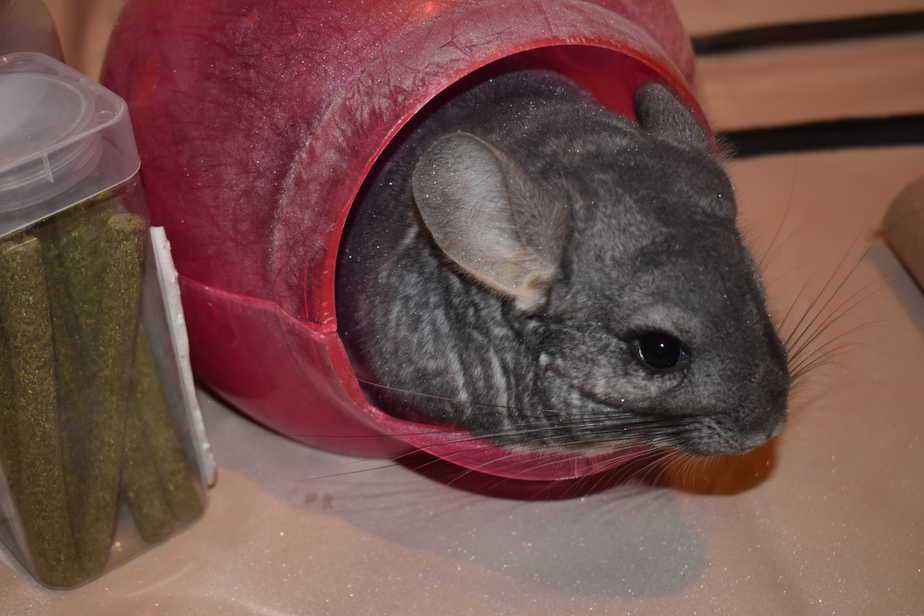
They need less care than a dog, but they are not completely low maintenance.
It is important to know what it takes to care for one, before you decide to get one.
Then you need to decide on a color.
Grey is the most common chinchilla color. Those are inexpensive and easy to find.
Violet chinchillas are more exotic. Owning one can be cool, but finding one will be difficult. And it will cost more.
Keep reading to learn everything you need to know about the violet chinchilla. We will help you figure out if it makes sense to try to find this rare color, or if it is better to just get a standard gray one.
Contents
Violet Chinchillas
As mentioned, violet chinchillas are rare. It can be cool to have such an exotic pet, but it may not be worth the hassle to find one. Let’s take a closer look at the violet chinchilla and find out what to expect.
Characteristics

Violet chinchillas have dark violet-blue fur, which is relatively rare compared to other chinchilla types. They are known for their adorable and playful personalities, and they enjoy spending time with their handlers.
They are overly active during twilight hours, which makes them perfect for nocturnal people or those who work from home. They are also social creatures and should not be kept alone to prevent boredom.
They are born with a white or beige coat but will change to their violet hue as they grow older. Like all chinchillas, they have a lifespan of up to 15 years in captivity and are known for their soft and dense fur.
Violet Chinchilla Price
The price of a violet chinchilla ranges from $375 to $500, depending on the breeder, the lineage of the animal, and its age. It’s essential to do your research and find a reputable breeder to ensure that you get a healthy and well-bred chinchilla.
You can adopt a violet chinchilla from a local shelter or rescue organization, which typically costs less than buying from a breeder. However, adopting a chinchilla may come with additional responsibilities, such as ensuring their health and determining their background.
Alternatively, you can purchase a violet chinchilla from a reputable breeder who specializes in breeding quality chinchillas. This option usually comes with a health guarantee and advice on caring for your new pet.
Wherever you choose to get your chinchilla, you will probably have a hard time finding a violet one that is available. You may need to search for a while, or wait a while for one to become available.
Caring For Your Violet Chinchilla

Taking care of a violet chinchilla requires some effort and attention to detail. To keep them healthy, they should be housed in a spacious and clean cage that is equipped with basic essentials such as food and water bowls, a hiding spot, and ledges, ramps and a wheel for exercise.
They also need a specific diet of hay and pellets, to ensure they are getting all the nutrients they need. Chinchillas have sensitive digestive systems, so it’s necessary to be mindful of what you’re feeding them.
Their diets should consist of hay, chinchilla pellets, and fresh water. They do not need anything else, but you can give them treats. But do so sparingly, and avoid sugary foods. Those can upset their stomachs. This includes fruit and vegetables. Dried flowers or plain cereals are good choices.
Additionally, chinchillas require regular cleaning of their cage, along with several dust baths a week. They also need an hour minimum of playtime outside the cage daily. It’s important to do your research on chinchilla care to ensure that you provide the best living conditions for your new pet.
Grooming
The thick fur of a violet chinchilla requires proper grooming. Grooming keeps them clean and healthy and reduces the likelihood of fur mats and tangles.
The nice thing is that chinchillas handle most of this themselves. You just need to make sure you provide your chinchilla with 2 to 3 dust baths a week and it will do the bathing. You just have to watch it roll around in the dust having the time of its life.
You can purchase dust from your local pet store or online. Put into a shallow bowl or a dust bath house (usually less messy) for your chinchilla. Put the dust bath in a chinchilla-proofed room outside the cage, or in a playpen and let your pet play around in it for around fifteen minutes, which will give your chinchilla enough time to clean themselves.

Make sure you allow your chinchilla to use the dust bath at least twice a week. It’s an important part of grooming, because the dust soaks up any excess oil from your chinchilla’s coat. Because of the density of your pet’s coat, you should never use water to keep your chinchilla clean.
If you do need to brush your chinchilla due to a fur mat or other problem with the fur, use a soft-bristled brush to go through the coat gently. Serious mats may need to be trimmed off.
Violet Chinchilla: Final Thoughts
Violet chinchillas are hard to come by. Some consider the extra effort and cost well worth it, because they want an especially exotic pet. Personally, I would just get a gray chinchilla. They are just as adorable and loving.
In fact, that’s exactly what I did! My pet is a grey chin. And to be honest, the violet chinchilla looks pretty close to the gray one anyway, especially at first glance. But violet, white, gray, black, or other chinchilla color, you are getting a wonderful pet!
Leave a Reply